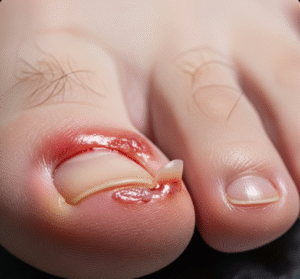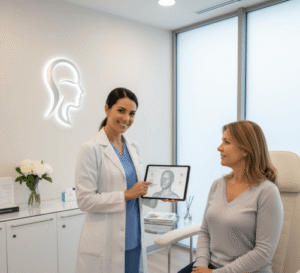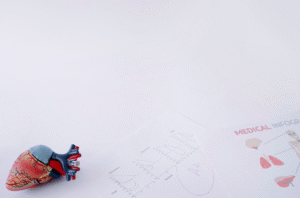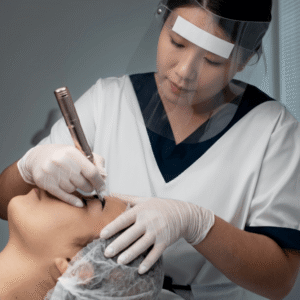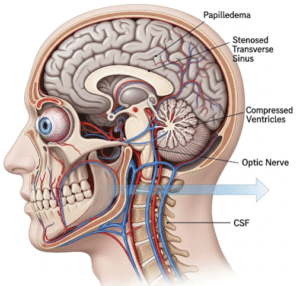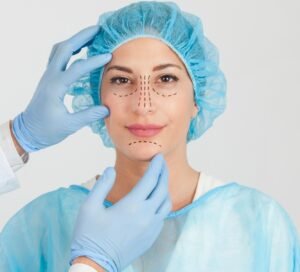Overview
The Syndrome of Trephined (also known as “sinking skin flap syndrome”) is a rare but serious complication following a decompressive craniectomy, a surgical procedure in which a portion of the skull is removed to relieve intracranial pressure. This condition can cause neurological deterioration due to changes in cerebral blood flow, brain shift, or atmospheric pressure on the unprotected brain. In Korea, the management of this syndrome is advanced, with access to expert neurosurgical care and early cranioplasty for recovery.
What is Syndrome of Trephined?
Syndrome of Trephined refers to a delayed neurological decline that occurs after decompressive craniectomy. It usually manifests weeks to months after surgery when the brain is left without bony protection on one side.
Key features:
- The skin over the surgical site sinks in
- This leads to mechanical and physiological changes in the brain
- Symptoms often reverse after cranioplasty (surgical replacement of the bone flap)
Symptoms
Symptoms may vary in severity and typically appear after initial post-operative improvement:
- Headache that worsens when sitting or standing
- Dizziness
- Cognitive decline (memory issues, confusion)
- Speech difficulties
- Motor weakness on one side of the body
- Fatigue
- Mood disturbances
- Seizures (in some cases)
- Sunken appearance at the surgical site
Causes
Syndrome of Trephined is caused by altered cerebral dynamics due to the missing skull bone:
- Loss of atmospheric protection over the brain
- Changes in intracranial pressure
- Distortion or sinking of the brain toward the craniectomy site
- Reduction in cerebral perfusion or cerebrospinal fluid (CSF) flow
It typically occurs after traumatic brain injury, stroke, or brain swelling, when a decompressive craniectomy was performed as a lifesaving measure.
Risk Factors
- Large craniectomy defects
- Delayed cranioplasty
- Older age
- Severe brain injury
- Prolonged ICU stay
- Poor nutritional status
- Hydrocephalus or shunting
Complications
If not identified and treated promptly, Syndrome of Trephined may result in:
- Permanent neurological deficits
- Increased seizure activity
- Cognitive and speech impairments
- Poor functional recovery after brain injury
- Psychosocial difficulties
However, early cranioplasty usually results in rapid and dramatic improvement in symptoms.
Prevention
Although not always preventable, the following can reduce the risk:
- Timely cranioplasty (within 2–3 months post-surgery, when safe)
- Close neurological monitoring after decompressive craniectomy
- Proper head positioning
- Protective helmets until cranioplasty is done
- Nutritional support and neurorehabilitation
Treatment Options in Korea
Korea offers excellent neurosurgical and neurorehabilitation services, ensuring high-quality care for patients with Syndrome of Trephined.
Diagnosis
- Clinical observation of new neurological symptoms post-craniectomy
- CT/MRI scans to assess:
- Brain shift
- Sunken skin flap
- Cerebral atrophy or midline shift
- Perfusion studies (in some centers) to assess cerebral blood flow
Definitive Treatment
- Cranioplasty: Surgical restoration of the skull using:
- Original bone flap (if preserved)
- Titanium mesh
- PEEK (polyetheretherketone) implants
- 3D-printed customized skull plates
This procedure typically reverses most symptoms within days to weeks.
Supportive Care
- Physical and occupational therapy
- Cognitive rehabilitation
- Seizure management (antiepileptic drugs)
- Helmet protection until surgery
- Psychological counseling
Advanced Care in Korea
Korea’s hospitals use image-guided cranioplasty, robot-assisted neurosurgery, and biocompatible implants for skull reconstruction.


